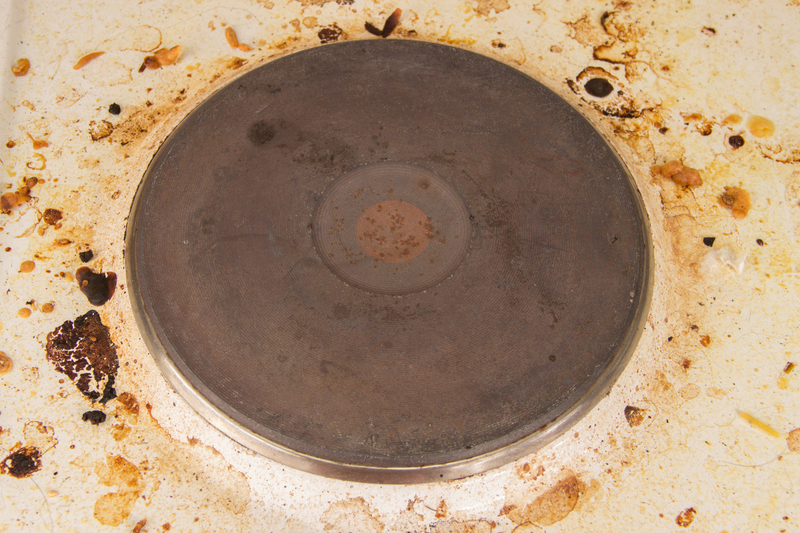Love a Clean Kitchen: Tips to Banish Grease from Enamel Oven Trays
Cooking delicious meals is one of the greatest joys of home life, but it can also mean facing a dreaded greasy mess on your enamel oven trays. For anyone striving to keep their kitchen sparkling, tackling stubborn grease stains on these trays is an essential skill. Whether you're an avid baker or a weekend chef, this comprehensive guide will show you how to remove grease from enamel oven trays efficiently, prolong their life, and maintain the hygiene of your beloved kitchen.
Why Is It Crucial to Keep Enamel Oven Trays Clean?
- Hygiene: Grease and leftover food particles can harbor bacteria and lead to unpleasant odors.
- Performance: Clean oven trays ensure even heat distribution for better cooking results.
- Longevity: Regular cleaning extends the life of your enamel trays, protecting them from corrosion and stubborn stains.
- Aesthetics: A clean kitchen is a more inviting and enjoyable space.
Let's explore expert tips to keep your enamel oven trays spotless and your kitchen radiant.

Understanding Enamel Oven Trays and Their Common Problems
What Are Enamel Oven Trays?
Enamel oven trays are metal trays coated with a smooth, durable layer of porcelain enamel. This finish resists sticking and is relatively easy to clean compared to untreated metal, but it can still fall prey to tough, baked-on grease if not cleaned promptly after use.
Common Issues with Greasy Enamel Oven Trays
- Stubborn grease stains that stick even after washing
- Browned or blackened patches from repeated high-temperature baking
- Lingering odors from burnt food residue
- Pitting or discoloration if improper cleaning agents are used
Don't worry--restoring the sparkle to your enamel baking trays is possible with the right approach!
Essential Tools and Supplies for Grease-Busting
- Soft sponges or non-scratch scrubbers
- Baking soda
- White vinegar
- Lemon juice
- Dish soap (preferably degreasing type)
- Hot water
- Microfiber cloth
- Hydrogen peroxide (for stubborn stains)
- Plastic scraper (optional for thick residue)
- Rubber gloves to protect your hands
Step-by-Step Methods to Remove Grease from Enamel Oven Trays
1. The Basic Soak Method
Soaking is your first line of defense! Here's how to effortlessly remove grease from enamel trays with this simple process:
- Fill your sink or basin with very hot water.
- Add a generous squeeze of dish soap. Choose a brand with strong degreasing power.
- Submerge the oven tray and leave it to soak for at least 30 minutes. For stubborn stains, soak overnight.
- After soaking, use a non-scratch sponge to scrub away softened grease.
This gentle approach protects the enamel coating while lifting away most surface grime.
2. Baking Soda and Vinegar Paste (The Eco-Friendly Solution)
Baking soda and vinegar are kitchen heroes in grease removal for enamel oven trays:
- Sprinkle a thick layer of baking soda over greasy areas.
- Drizzle or spray white vinegar onto the baking soda until it fizzes.
- Let the mixture sit for at least 30 minutes (even longer for tough stains).
- Scrub gently with a non-scratch sponge, focusing on the greasy patches.
- Rinse thoroughly with hot water and dry with a microfiber cloth.
Tip: Mix lemon juice with baking soda for a pleasant scent and extra degreasing.
3. Lemon Power for Shiny Enamel Trays
Lemon juice contains natural acids that break down grease and leave your trays sweet-smelling:
- Cut a lemon in half.
- Rub the cut side directly onto the greasy stains on your enamel tray.
- Squeeze more juice as needed and let it sit for 10-15 minutes.
- Wipe clean with a damp sponge or cloth.
This method is gentle and safe for regular use, making it perfect for routine cleaning of enamel oven trays.
4. Hydrogen Peroxide and Baking Soda for Extra-Stubborn Grease
If your enamel oven trays have accumulated thick, baked-on grease, try this intensive method:
- Sprinkle a thick layer of baking soda on the tray.
- Pour hydrogen peroxide over the baking soda, forming a paste.
- Let the paste sit for several hours (or overnight for maximum effect).
- Scrape off the loosened grease gently using a plastic scraper.
- Rinse thoroughly and dry.
Note: Always use gloves and ventilate the area when working with hydrogen peroxide. Test a small spot to check enamel compatibility.
5. Steam Cleaning for Fast Results
Steam cleaning is a quick way to loosen grime and sanitize enamel ovenware:
- Preheat your oven to 120?C (250?F).
- Fill a heatproof dish with water and place it on a rack below your enamel tray.
- Let the steam fill the oven for 20-30 minutes.
- Remove the tray carefully (it will be hot), then wipe away softened grease with a sponge.
This method reduces the need for heavy scrubbing, preserving the beautiful enamel finish.
Pro Tips for Preventing Grease Build-Up on Enamel Oven Trays
1. Line Your Trays Wisely
Use baking parchment, silicone mats, or heavy-duty foil to catch drips and crumbs, sparing the enamel surface from direct contact with fatty foods.
2. Clean Promptly After Use
The longer grease sits, the harder it clings. Wash enamel oven trays as soon as they cool, before grease has a chance to harden.
3. Avoid Abrasive Tools
Never use steel wool or metal scrubbers on enamel, as these can cause chips or scratches that make future cleaning more difficult.
4. Use the Right Cleaning Products
Stick to mild, non-abrasive cleaners, degreasing dish soap, and natural solutions like vinegar and baking soda. Avoid harsh chemical oven cleaners unless the manufacturer says they're safe for enamel.
5. Regular Maintenance
- Monthly deep cleaning helps prevent build-up of baked-on residue and keeps trays looking new.
- Check for chips or cracks in the enamel. If you notice damaged spots, treat them gently and avoid harsh cycles.
Common Mistakes to Avoid When Cleaning Enamel Oven Trays
- Using metal utensils or knives to scrape off baked-on grease (this causes scratches!)
- Using highly alkaline cleaners or bleach that can erode the enamel oating
- Running enamelware through high-temperature dishwasher cycles not recommended by the manufacturer
- Letting soaked trays sit too long in standing water (this can cause rusting along exposed edges)
Special Considerations for Old or Discolored Enamel Trays
If your oven trays are vintage or have lost their original shine, the above cleaning methods still apply, but you may need to repeat them several times. For persistently discolored patches:
- Try multiple rounds of the baking soda and vinegar paste.
- Soak in hot water with a few tablespoons of washing soda (not baking soda).
- For lingering odors, sprinkle trays with dry baking soda and let them sit overnight before rinsing.
Be gentle--for older enamel trays, err on the side of caution and always avoid abrasives.

FAQs about Cleaning Enamel Oven Trays
Can I clean enamel oven trays in the dishwasher?
While some enamel trays are labeled "dishwasher safe", check the manufacturer's instructions first. Prolonged dishwasher cycles, especially on high heat, can wear down the enamel finish over time. Hand washing is usually gentler and extends the life of your trays.
How often should I deep clean my enamel oven trays?
Perform a deep clean (using baking soda and vinegar, steam, etc.) every 4-6 weeks, or more often if you're a frequent baker.
My tray has black spots that won't come off. Is it ruined?
Blackened areas are common on well-used enamel trays. As long as the enamel isn't chipped and the surface is smooth, your tray is still safe to use. Persistent black marks may fade over time with repeated gentle cleaning but don't obsess over making them look "brand new."
Can I use oven cleaners on enamel trays?
Most oven cleaners contain harsh chemicals that can damage enamel. Only use those specifically stated as "enamel safe," and always rinse thoroughly. When in doubt, stick to natural degreasers like baking soda and lemon.
Conclusion: Celebrate Your Spotless Enamel Oven Trays!
Now you're armed with the knowledge and methods to banish grease and grime from your enamel oven trays. By following these easy, effective cleaning and maintenance tips, you'll not only enjoy a visually stunning kitchen but also create a more hygienic and pleasant cooking environment.
Remember: Prompt, gentle cleaning preserves your enamel ovenware for years of delicious homemade meals.
With a little dedication, your trays will stay as gleaming as the day you bought them--making you truly love your clean kitchen!
Share Your Success
If you've discovered a fantastic grease-busting technique or want to share a before-and-after photo of your spotless enamel trays, join the conversation below! Happy cleaning and happy cooking!


